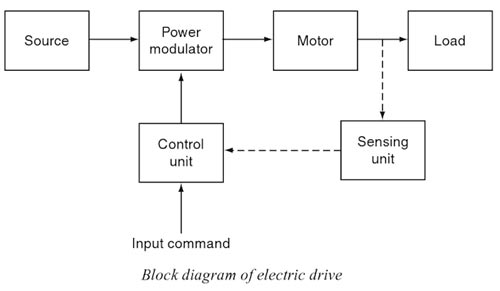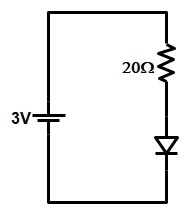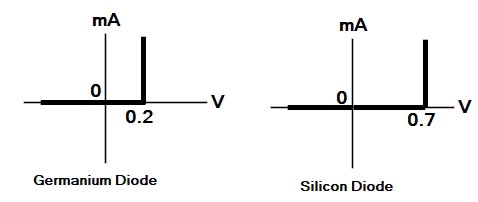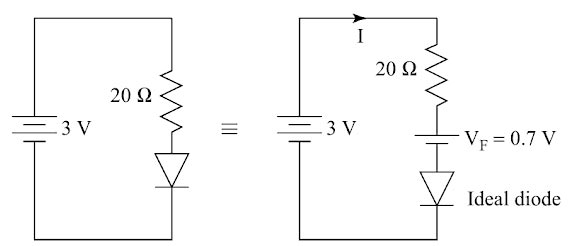Ques 6(a). A residential flat has the following average electrical consumption per day:
- 4 tube lights of 40 watts working for 5 hours per day
- 2 filaments of 60 watts working for 8 hours per day
- 1 water heater 2 kW working for 1 hours per day
- 1 water pump of 0.5 kW rating workings for 3 hours per day
Calculate the cost of energy per month if 1 kWh of energy(i.e, 1 unit of energy) cost is 3.50
Answer:-
Energy consumption or power consumption refers to the electrical energy per unit time is given as
Energy consumption = Power × Time
(i) 4 tube lights of 40 watts working for 5 hours per day
Energy consumption = Power × Time = 4 × 40 × 5 = 800whr.
(ii) 2 filaments of 60 watts working for 8 hours per day
Energy consumption = Power × Time = 2 × 60 × 8 = 960whr.
(iii) 1 water heater 2 kW working for 1 hours per day
Energy consumption = 1 × 2 ×1000 = 2000whr.
(iv) 1 water pump of 0.5 kW rating workings for 3 hours per day
Energy consumption = 1 × 0.58 × 1000 = 1740whr.
Total power consumption per day in (watt hr).
= 800 + 960 + 2000 + 1740 = 5500 whr. or 5.5 Kwh
As we know that 1 kWh = 1 unit
The cost of 1 unit is Rs. 3.50 Rs
So the cost of energy per month (i.e in 30 days)
= 3.50 × 5.5 × 30 = 577.5 Rs
Ques 6(b):- Give the advantage and disadvantages of electric drives.
Answer:-
Motor control is required in the large number of industrial and domestic applications such as transportation systems, rolling mills, paper machines, textile mills, machine tools, fans, pumps, robots, and washing machines. Systems employed for motion control are called drives and may employ any of the prime movers.
Drives employing electric motors are known as electric drives.
or
The system which is used for controlling the motion of an electrical machine, such type of system is called an electrical drive.

The electric drive becomes more popular because of its simplicity, reliability, cleanliness, easiness, and smooth control. Both AC and DC motors are used as electric drives however, the AC system is preferred because:
- It is cheaper.
- It can be easily transmitted with low-line losses.
- It can be easy to maintain the voltage at consumer premises within prescribed limits.
- It is possible to increase or decrease the voltage without appreciable loss of power.
In spite of the advantages of AC motor, sometimes DC motor is used because:
- In some processes, such as electrochemical and battery charging, DC is the only type of power that is suitable.
- The speed control of DC motors is easy rather than AC thus, for variable speed applications such as lift and Ward Leonard system, the DC motors are preferred.
- The DC series motor is suited for traction work because of high starting torque.
Advantages of electric drives:
There are a number of inherent advantages that the electric drive possesses over the other forms of conventional drives are:
(1). Easy Control: They have flexible control characteristics. The steady-state and dynamic characteristics of electrical drives can be shaped to satisfy load requirements. Speed can be controlled and, if required, can be controlled within wide limits.
(2) BreakingElectric braking can be employed. Control gear required for speed control, starting and braking are usually simple and easy to operate.
(3) Availability of semiconductor: Availability of semiconductor converters employing thyristors, power transistors, IGBTs and GTOs, linear and digital ICs, and microcomputers have made the control characteristics even more flexible. It is possible to reshape characteristics of drives almost at will to meet load requirements in an optimum manner. Speed and torque and transitions from one mode to another can be controlled smoothly and steplessly. Optimal control strategies can be implemented to achieve high dynamic performance, high efficiency or to minimize a suitable performance index Drives can be provided with automatic fault detection systems. Programmable logic controllers and computers can be employed to automatically control the drive operations in the desired Sequence.
(4). They are available in wide range of torque, speed, and power.
(5) Efficiency: Electric motors have high efficiency, low no-load losses and considerable short time overloading capability. Can be made in the variety of designs to make them compatible with the load. Compared to other prime movers they have the longer life, lower noise, lower maintenance requirements and cleaner operation.
(6) Adaptability: They are adaptable to almost any operating conditions such as explosive and radioactive environment, submerged in liquids, vertical mountings, and so on.
(7) Environment-Friendly: It develops the clean form of energy, as there are no flue gases, etc. Hence it does not pollute the environment.
(8) Ease of Operation: It Can operate in all the four quadrants of the speed-torque plane.
(9) Long-Life: Electric braking gives smooth deceleration and increases the life of the equipment compared to other forms of braking. When regenerative braking is possible, the considerable saving of energy is achieved. These features are not available in other prime movers.
(10) Easy to start: Unlike other prime movers, there is no need to refuel or warm-up the motor. They can be started instantly and can immediately be fully loaded.
They are powered by electrical energy which has a number of advantages over other forms of energy. It can be generated and transported to the desired point economically and efficiently. Conversion of electrical to mechanical energy and vice versa and electrical energy from one form to another can also be done efficiently and economically.
Because of the above advantages, the mechanical energy already available from a nonelectrical prime mover is sometimes first converted into electrical energy by a generator and back to mechanical energy by an electric motor. Electrical link thus provided between the nonelectrical prime mover and the load imparts to the drive flexible control characteristics. Consequently, the load requirements are fully met.
For example, in diesel-electric locomotive and ship, the mechanical energy produced by the diesel engine is converted into electrical energy by an electrical generator and is utilized to drive electric motors which drive locomotive and ship. The operations of generator and motors can be controlled to shape speed-torque curves and other parameters to meet traction or Propulsion requirements in the best possible manner.
Disadvantages of Electric Drive
The two inherent disadvantages of the electrical drive system are :
- In the case of the failure of the supply, the electric drive comes to the rest position which may paralyze the whole system.
- The application of the electric drive system is limited to electric field area only i.e electric drives are not used where the supply is not available. They require the continuous power supply.
- In the case of the faults like short circuits, break down of overhead conductors the electric drive system may get damaged and lead to several problems.
- Compliance and wear problems causing inaccuracies.
- Poor Dynamic Response
- To increase torque, a larger and heavier motor must be used which is costly.
However, the above two disadvantages can be overcome by installing diesel-driven D.C. generators and turbine-driven 3-phase alternators which can be used either in the absence of or when the failure of normal electric supply.
Ques 6(c). A silicon diode is connected across 3V supply with a series resistance of 20Ω as shown in the figure. Neglecting the diode resistance, find the diode current

Answer:- A diode requires that the potential barrier voltage of its PN junction must be overcome before it can be forward biased on.

The barrier potential and the actual voltage drop in a live circuit of a germanium diode is about 0.2V and a silicon diode is about 0. 7V. The germanium diode must have at least 0 2 V applied to it by the circuit to turn it on and conduct, otherwise, it draws 0 A (Acting like an open circuit). The silicon must have at least 0.7 V applied to it for the diode to turn on and conduct.

A silicon diode has VF = 0.7 V. The diode equivalent circuit is shown above.
Applying the Kirchhoff’s Voltage Law
3V – 20I – 0.7V = 0
20I = 2.3V
I = 2.3/20 = 0.115A
For SSC JE CONVENTIONAL Paper 2017 CLICK HERE
For SSC JE CONVENTIONAL Paper 2016 CLICK HERE
For DMRC 2016 Solved Paper CLICK HERE
For DMRC 2015 Solved Paper CLICK HERE
For DMRC 2014 Solved Paper CLICK HERE
For NMRC 2017 Solved Paper CLICK HERE

